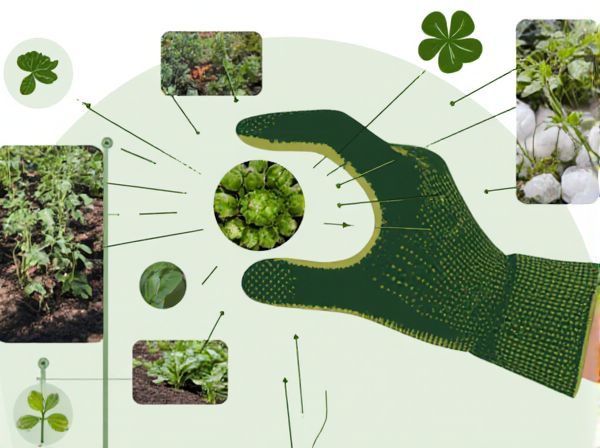
Permaculture vs Conventional agriculture Illustration
Permaculture emphasizes sustainable, regenerative practices that work with natural ecosystems to enhance soil health and biodiversity, contrasting sharply with conventional agriculture's reliance on synthetic inputs and monocropping. By integrating crop diversity, water conservation, and natural pest management, permaculture reduces environmental impact and promotes long-term resilience. Conventional agriculture often prioritizes short-term yield through intensive resource use, leading to soil degradation and decreased ecological balance.
Table of Comparison
| Aspect | Permaculture | Conventional Agriculture |
|---|---|---|
| Soil Management | Uses natural compost, mulch, and crop rotation to enhance soil health | Relies on synthetic fertilizers and monocropping, leading to soil depletion |
| Biodiversity | Encourages diverse plants and animals to create resilient ecosystems | Limited diversity, often focused on single crops or livestock breeds |
| Water Usage | Efficient water conservation through rainwater harvesting and natural irrigation | High water consumption with heavy reliance on irrigation systems |
| Pest Control | Natural pest management using beneficial insects and companion planting | Heavy use of chemical pesticides and herbicides |
| Environmental Impact | Minimizes pollution and supports ecosystem services | Contributes to pollution, soil erosion, and habitat loss |
| Energy Consumption | Low energy input, relying on human labor and natural processes | High energy use from machinery and synthetic inputs |
| Yield | Moderate yields with focus on sustainability and resilience | High yields prioritized, sometimes at environmental cost |
Understanding Permaculture: Principles and Practices
Permaculture emphasizes designing agricultural systems that mimic natural ecosystems, promoting biodiversity, soil health, and resource efficiency. Core principles include using renewable resources, minimizing waste, and integrating plants, animals, and insects to create self-sustaining environments. By prioritizing closed-loop systems and ecological balance, permaculture contrasts with conventional agriculture, which often relies on synthetic inputs and monocultures.
Overview of Conventional Agriculture Methods
Conventional agriculture relies heavily on synthetic chemical inputs such as fertilizers, pesticides, and herbicides to maximize crop yields and control pests. Monocropping and intensive tillage are common practices that often degrade soil health and reduce biodiversity over time. These methods prioritize short-term productivity and large-scale food production but can contribute to environmental challenges like soil erosion and water pollution.
Soil Health: Permaculture vs Conventional Approaches
Permaculture enhances soil health by using diverse plant species, organic mulching, and natural composting methods that promote microbial activity and improve soil structure. Conventional agriculture often relies on synthetic fertilizers and intensive tillage, leading to soil degradation, reduced organic matter, and diminished biodiversity. The regenerative practices in permaculture foster long-term soil fertility and resilience against erosion compared to conventional monoculture systems.
Biodiversity and Ecosystem Impact
Permaculture enhances biodiversity by integrating diverse plant species and natural habitats, promoting ecosystem resilience and soil health. Conventional agriculture often relies on monocultures and chemical inputs, which reduce habitat variety and disrupt ecosystem balance. The sustainable practices in permaculture foster native wildlife populations and improve water retention, contrasting with the environmental degradation frequently associated with conventional farming methods.
Water Usage and Conservation Strategies
Permaculture prioritizes water conservation through techniques like rainwater harvesting, swales, and mulching, significantly reducing water usage compared to conventional agriculture, which often relies on intensive irrigation methods. Conventional agriculture typically consumes 70-80% of freshwater resources globally, whereas permaculture systems enhance soil moisture retention and promote natural water cycles, minimizing runoff and evaporation. These sustainable water management practices in permaculture contribute to ecosystem resilience and long-term agricultural productivity.
Pest and Weed Management Techniques
Permaculture employs natural pest and weed management techniques such as companion planting, polycultures, and the use of beneficial insects to create a self-sustaining ecosystem. Conventional agriculture relies heavily on synthetic pesticides and herbicides for pest and weed control, often leading to chemical resistance and environmental degradation. Integrating biodiversity in permaculture reduces the need for chemical inputs, promoting soil health and long-term ecological balance.
Chemical Inputs: Fertilizers and Pesticides
Permaculture minimizes chemical inputs by relying on natural fertilizers such as compost and green manure, enhancing soil health and biodiversity. Conventional agriculture often depends heavily on synthetic fertilizers and pesticides, which can degrade soil quality and harm beneficial organisms. Reduced chemical use in permaculture supports sustainable ecosystems and long-term crop productivity.
Crop Yields and Food Production Comparison
Permaculture emphasizes biodiversity, soil health, and sustainable resource use, often resulting in resilient crop yields that can match or surpass conventional agriculture over time. Conventional agriculture typically achieves higher immediate crop yields through synthetic inputs and monoculture practices but may degrade soil quality and reduce long-term productivity. Comparing food production, permaculture promotes ecological balance and food security by enhancing ecosystem services, while conventional methods maximize short-term output with potential environmental trade-offs.
Sustainability and Long-Term Viability
Permaculture enhances sustainability by mimicking natural ecosystems, promoting biodiversity, and enriching soil health through organic practices that reduce chemical dependence. Conventional agriculture often relies on synthetic inputs and monocultures, leading to soil degradation, reduced biodiversity, and long-term vulnerability to pests and diseases. The long-term viability of permaculture lies in its regenerative approach, fostering resilient land use and sustainable food systems that support environmental balance and resource conservation.
Transitioning from Conventional to Permaculture
Transitioning from conventional agriculture to permaculture involves adopting sustainable practices that emphasize soil health, biodiversity, and ecosystem balance. Key steps include reducing chemical inputs, incorporating perennial plants, and designing land use based on natural patterns to improve water retention and crop resilience. This shift promotes long-term productivity, reduces environmental impact, and supports regenerative agricultural systems.
Permaculture vs Conventional agriculture Infographic

 gardendif.com
gardendif.com